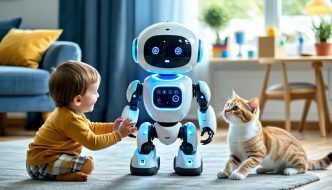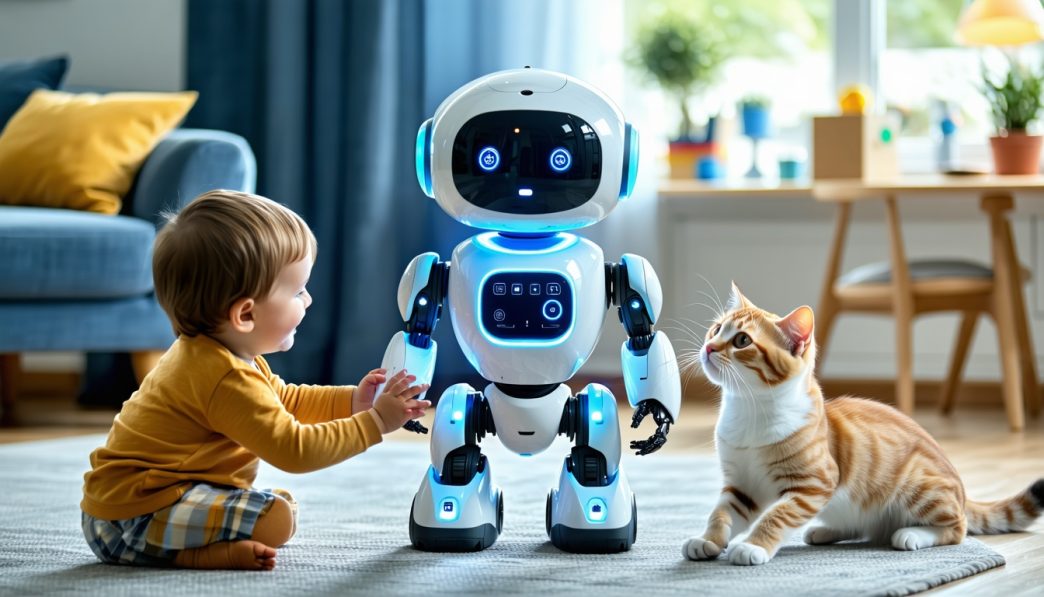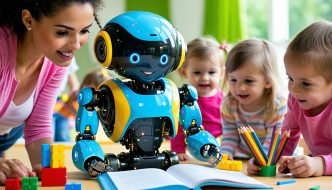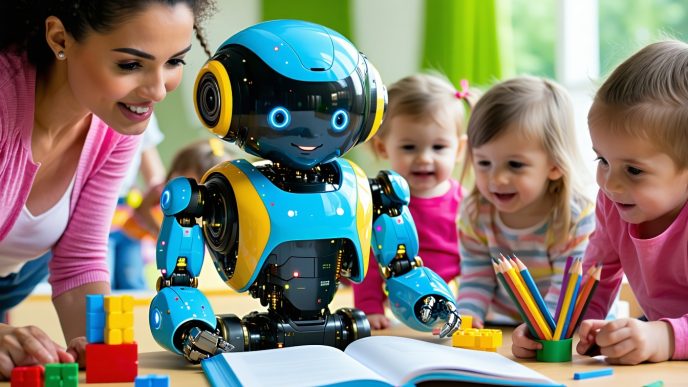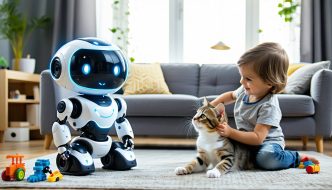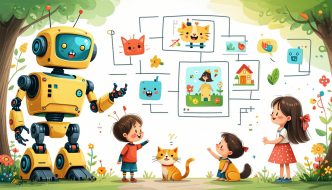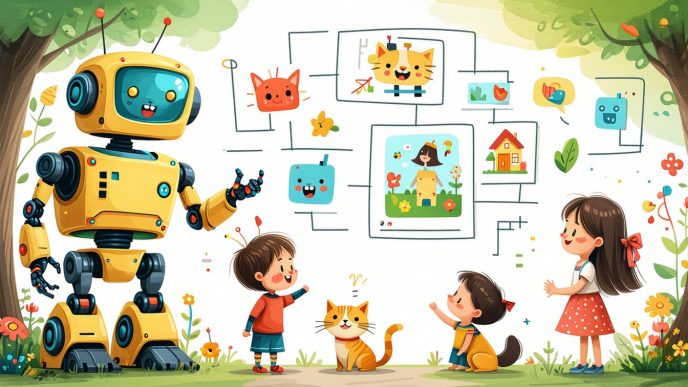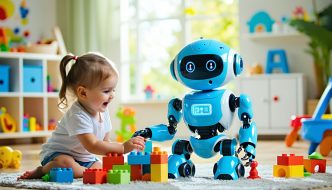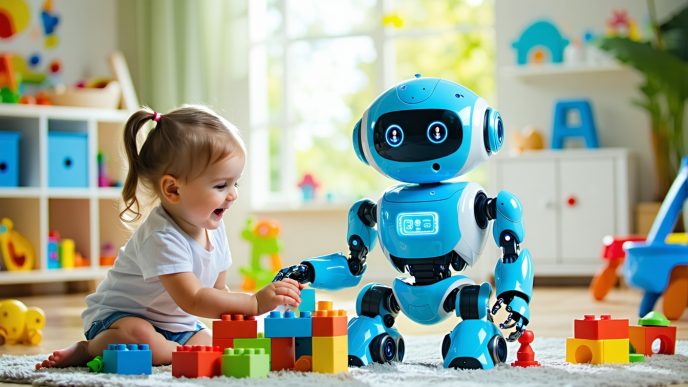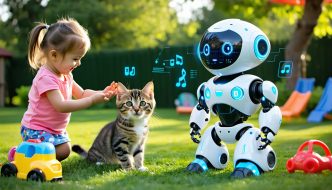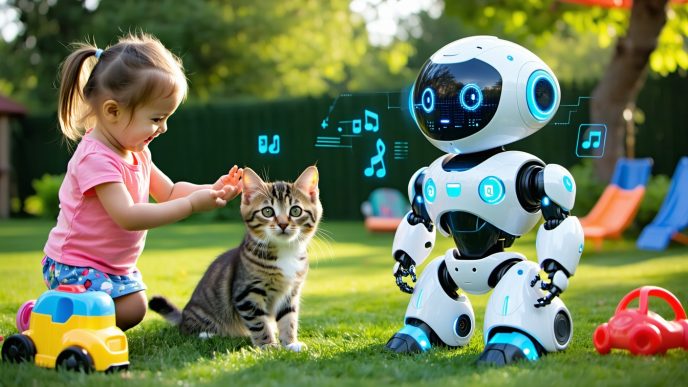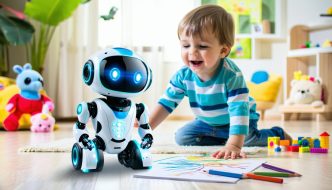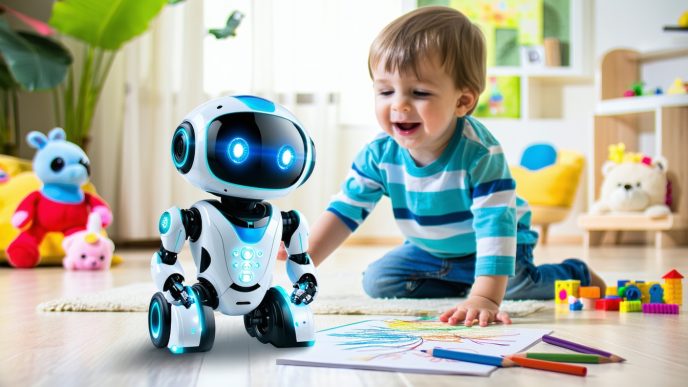Robotics in Home Environment
The Role of Robots in Interacting with Children and Pets
Robots are increasingly being integrated into home environments to assist in interactions with children and pets. These advanced machines can serve various roles, from educational companions for kids to playful partners for pets. As families seek innovative ways to support learning and entertainment, the deployment of robots designed for these activities is expanding.
Robotic systems can engage with children through interactive games, storytelling, and educational lessons. These robots often come equipped with programming that promotes learning in subjects like math and science. By incorporating interactive technology, they encourage curiosity and creativity in young children. Similarly, robots designed for pets can facilitate playtime and keep animals engaged, preventing boredom and associated behavioral issues.
While the advantages of robot interaction are compelling, the priority must always be on safety. Families want peace of mind knowing that these devices can interact without posing risks to their loved ones. Understanding the role of robots in family dynamics is crucial for parents eager to explore new methods of supervision and entertainment. For more about robot interaction with kids and pets, see our article on child and pet interaction with robots.
Importance of Safety Features in Robot Design
Safety features are paramount when designing robots for environments with children and pets. Manufacturers must prioritize mechanisms that mitigate risks associated with robotic interactions. Robots should contain safety features for kids and pets, ensuring that devices operate within a framework that prevents accidents and injuries.
Some essential safety features are as follows:
| Safety Feature | Description |
|---|---|
| Collapsible Parts | Components that can retract or fold away, reducing injury risks during interaction. |
| Emergency Stop Function | A mechanism that allows immediate cessation of robot activity at the push of a button. |
| Soft Edges and Materials | Design elements that avoid sharp edges, minimizing potential harm during contact. |
| Stability Control | Technology that ensures the robot remains upright and avoids tipping or falling. |
The inclusion of these safety features not only protects children and pets but also fosters a secure environment for interaction. Parents want confidence in the safety of technological companions. Additionally, robots can assist in teaching safety protocols to kids, enhancing their understanding of safe interactions with technology. More insights into this area can be found in our article on robots teaching safety to kids.
By emphasizing safety in robotic design, families can embrace the benefits of engineering developments while ensuring that interactions remain positive and secure for both children and pets. Innovations in safety will play a crucial role in the future of robotic interactions with children and pets. For a deeper look into anticipated advancements, check out our article on future of robot interactions with children and pets.
Preventing Accidents with Robots
As robots increasingly become part of home environments, ensuring their safe interaction with children and pets is paramount. Two essential technologies that contribute to safety in robotic designs are collision detection and avoidance systems, alongside soft robotics technology.
Collision Detection and Avoidance Systems
Collision detection and avoidance systems enable robots to perceive their surroundings accurately and navigate without causing harm. These systems use a combination of sensors, including infrared, ultrasonic, and camera-based technologies, to detect objects and obstacles in their path.
The effectiveness of these systems can be evaluated based on their range and reaction time, which is crucial for preventing accidents, especially in homes with active children and pets.
| Technology Type | Detection Range | Reaction Time |
|---|---|---|
| Infrared Sensors | Up to 5 meters | < 100 ms |
| Ultrasonic Sensors | Up to 3 meters | < 200 ms |
| Camera-Based Systems | Varies (depends on resolution) | < 150 ms |
With the integration of such systems, robots can alter their path or stop entirely when detecting an obstacle, significantly reducing the risk of accidents. For families exploring the role of robots in safe child and pet interaction, this technology is essential. More details on this topic can be found in our article on child and pet interaction with robots.
Soft Robotics Technology for Gentle Interaction
Soft robotics technology focuses on creating robots with flexible, deformable bodies that can interact gently with their environment. This innovation is especially beneficial in households with children and pets, as it minimizes the risk of injury during interactions. Soft robots are designed to conform to the shapes of objects and individuals, allowing for a more caring and responsive interaction.
These robots utilize materials that are soft and easy to manipulate, contributing to safer engagement. For instance, robots equipped with soft actuators can absorb shocks upon contact, preventing harsh impacts that might cause harm.
| Feature | Description |
|---|---|
| Soft Materials | Use of silicone or rubber for body construction to prevent injury |
| Adaptive Movement | Ability to adjust movements based on interactions, providing a calmer touch |
| Safety Protocols | Programmed responses to maintain safe distances from obstacles |
Soft robotics is instrumental in applications where gentleness is crucial, such as robots as play companions for children or in robots monitoring pets at home. The safer interaction these technologies provide enhances the bonding experience, allowing for emotional connection without compromising safety. Families can also explore how these robots support emotional bonding with robots, ensuring fun and education for both children and pets.
By implementing collision detection systems and soft robotics technology, designers are making strides toward ensuring safety features for kids and pets in robots. Such advancements open the door for future innovations in robotic interactions, creating a more secure and engaging home environment. For more insights on the dynamics of these interactions, check out our article on the future of robot interactions with children and pets.
Ensuring Safe Interaction
As robots increasingly become integrated into homes, especially for families with children and pets, ensuring safe interaction is of utmost importance. Two critical components that contribute to this safety are sensors for proximity and touch, and artificial intelligence for learning and adaptation.
Sensors for Proximity and Touch
Sensors play a vital role in enabling robots to interact safely with children and pets. Proximity sensors help robots detect nearby objects, allowing them to respond appropriately and avoid collisions. In the case of children and pets, these sensors can prevent accidents that could lead to injury.
| Sensor Type | Function | Benefits |
|---|---|---|
| Infrared Sensors | Detect distance from objects | Prevents collisions with children and pets |
| Ultrasonic Sensors | Measures distance using sound waves | Accurate proximity detection for delicate interactions |
| Touch Sensors | Responds to physical contact | Allows gentle interaction with kids and pets |
These sensors contribute significantly to the overall safety features for kids and pets in robots. By providing real-time feedback to the robot’s control system, they enable safe navigation and interaction in various environments.
Artificial Intelligence for Learning and Adaptation
Artificial intelligence (AI) further enhances the safety and functionality of robots. By utilizing learning algorithms, robots can adapt to their surroundings, recognizing familiar faces and understanding patterns of interaction. This adaptability is crucial in a home environment where dynamics can change.
AI allows robots to:
- Recognize potential hazards in the environment
- Learn the behavior of children and pets, adjusting their interaction methods accordingly
- Follow commands and respond to changes in tone or language
The incorporation of AI creates a safe, interactive experience for both children and pets, fostering a comfortable environment for play and learning. For more on how robots can engage with children, explore our articles on robots as play companions for children and robots teaching safety to kids.
By integrating advanced sensors and AI capabilities, robots are designed to ensure safe interaction in homes, providing families with peace of mind while enhancing engagement in child and pet activities.
Safe Monitoring and Supervision
In the realm of robotics, one of the primary focuses is ensuring the safety of children and pets in the home environment. Incorporating advanced features enables robots to effectively monitor and supervise, offering peace of mind to parents and pet owners. This section will explore the integration of camera and audio systems for surveillance as well as the capabilities of remote control and monitoring.
Camera and Audio Systems for Surveillance
Robots equipped with camera and audio systems can significantly enhance safety features for kids and pets. These systems facilitate real-time monitoring, allowing caregivers to maintain awareness of their children’s and pets’ activities.
| Feature | Description |
|---|---|
| HD Video Recording | Provides clear images for effective monitoring. |
| Two-Way Audio | Allows communication between parents and their children or pets. |
| Motion Detection | Alerts users to unexpected movement, enhancing security. |
The use of camera systems in robotics can apply to both child and pet supervision. For example, robots can offer insights into children’s interactions or ensure that pets are engaged and safe in their environment. For a deeper look into how robots can interact with children and pets, check out our article on child and pet interaction with robots.
Remote Control and Monitoring Capabilities
Remote control functionality takes surveillance to the next level, giving parents and pet owners the ability to manage robots from anywhere within the home. This feature allows for greater flexibility and control, making it easier to ensure the well-being of loved ones.
| Capability | Functionality |
|---|---|
| Smartphone App Integration | Provides an interface for users to control and monitor robots. |
| Instant Alerts | Sends notifications to users regarding specific activities or incidents. |
| Remote Movement Control | Allows users to navigate the robot for onsite monitoring. |
Having remote control capabilities means that parents can check in on their children or pets while attending to other tasks. The combination of remote access and real-time data can play a crucial role in maintaining safety. To read more about how robots can effectively monitor pets at home, see our article on robots monitoring pets at home.
The incorporation of advanced camera and audio systems along with remote control features exemplifies the strides made in robotic technology to ensure safe environments for children and pets. Enhanced monitoring promotes emotional bonding as well, bridging the connection between technology and family. For further exploration of these interactions, you can refer to our article on emotional bonding with robots.
Designing for Child and Pet Safety
When designing robots intended for interaction with children and pets, safety is a top priority. This section highlights crucial safety features that enhance the usability of robots in homes with kids and animals.
Rounded Edges and Safe Materials
To prevent injuries, robot manufacturers often implement rounded edges and use non-toxic materials in their designs. Sharp corners and hard surfaces can pose risks, especially in active households where children and pets might bump into or grab the robot.
| Safety Feature | Description |
|---|---|
| Rounded Edges | Prevents cuts and bruises during interactions. |
| Non-toxic Materials | Ensures that any contact poses no health risks. |
This design approach aligns with the need for child and pet interaction with robots. Using safe materials not only reassures parents but also encourages free play and exploration without constant supervision.
Child-Lock Features and Pet-Friendly Design
Child-lock features prevent children from accidentally accessing parts of the robot that might be unsafe. These functionalities may include security codes, physical locks, or even app-based controls that restrict certain operations when engaged.
| Safety Feature | Functionality |
|---|---|
| Child-Lock Features | Prevents kids from changing settings or opening compartments. |
| Pet-Friendly Design | Incorporates features like chew-resistant materials and stable bases to withstand playful pets. |
Designing robots with pets in mind involves ensuring durability and resistance to wear and tear. For instance, robots can include protective casings for critical internal components to withstand playful nibbles typically associated with pets. The aim is to allow safe access to both children and pets while ensuring operational effectiveness.
Robots are being developed to provide entertainment and educational value, such as robots as play companions for children or robots monitoring pets at home. By integrating these safety features, the technology becomes more versatile and trustworthy, allowing families to explore the potential of robotic companions effectively.

